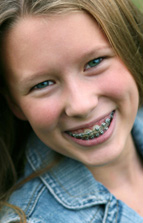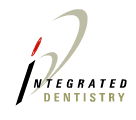The traditional approach to orthodontics has been to focus on straightening teeth, particularly the top front teeth. The word orthodontics literally means “straight (ortho) teeth (-dontics)”. More recently, it has become known that there is a relationship between the health of the jaw joints, and the health of the bite (or the way the teeth fit together). If the bite and the joints are healthy, then there is also a tendency for the face to be more attractive overall, so there are some orthodontists who have, since about the year 2000, been practicing “full face orthodontics”.
Dr Trevor Baret, at Integrated Dentistry, discovered in the late 1980s, through discussions with Chiropractic colleagues, that there was a relationship between the way the jaws fitted, and total body posture. With further investigation, he found a Chiropractor who had been studying this relationship in detail for some years, Dr Bob Walker. Dr Walker had been encouraged to visit Australia from his home in St Louis, to teach a small group of Chiropractors and Dentists about his revolutionary approach to combining the skills of Chiropractic and Orthodontics into a team approach. Dr Baret has been studying with Dr Walker since 1990, and they have worked together to develop some of the ideas now being taught in by Dr Walker internationally.
Full Body Orthodontics is the term Dr Baret uses to describe what he believes to be the most thorough approach to treatment of malocclusions (bite disturbances, including crooked teeth). It involves an assessment of the teeth, the jaws, the TMJs (Temporo-Mandibular Joints or jaw joints), head posture and total body posture. While Dr Baret is treating the teeth, jaw posture and TMJs, your Chiropractor will be treating body posture, head posture, and assisting Dr Baret with the cranial bones. This allows us to treat the mechanical structure of the entire body to achieve the best possible overall health.
By treating this way, we remove the influences which cause relapse of the result (relapse is when the body starts to move things back to where they started – one of the greatest concerns with traditional and even full face orthodontics). The approach to Full Body Orthodontics at Integrated Dentistry, starts with proper diagnosis. Dr Baret will carry out a complete diagnostic examination to assess your entire body structure, and ascertain where there are strains and distortions. We have found that strains in one part of the body will cause instabilities in other areas. The area which has the most obvious distortion may be a symptom of a strain in a totally different structure. Crooked or overcrowded teeth are often associated with mouth breathing, which may in turn be due to an airway obstruction, or a forward head posture, which might be due to a strain in the spine – so straightening the teeth may not be stable without concurrently treating the causes.
There are many articles in the research which show a relationship between malocclusion and posture. It is because of this relationship that we believe the Full Body approach to be so important to health in general and the health of the oral structures in particular. Indeed, we consider it to be the only way to achieve the best possible result from your orthodontic treatment, TMJ treatment or chiropractic. At Integrated Dentistry, we also acknowledge the body’s biochemistry, and its relationship to the health of the entire body. Often, a biochemical distortion will be associated with a biomechanical distortion, so the biochemistry will be attended to at the same time as the mechanical structures when necessary. A classical example of such a relationship is osteoarthritis – a physical strain on the affected joint results in breakdown of the protective covering of the bones, and the joint capsule, leading to a leakage of the joint contents, and chemical attack from surrounding tissues.
Alternatively, a chemical imbalance will affect the lubrication of the joints which results in the mechanical breakdown of the protective covering of the bone within the joints. Dr Baret completed his Diploma of Nutrition studies in 2001, passing with high distinction. This knowledge helps him in determining some of the nutritional needs of those suffering with various biomechanical distortions and other dentally related conditions. It is not uncommon for Dr Baret to suggest various nutritional supplements or regimes to assist in the treatment of various conditions.
A Full Body approach also requires that we work with other specialists when there are matters which can not be adequately handled within our practice. We are very fortunate to have excellent specialists in our local area. When there is an airway problem related to mouth breathing, we can refer our patients to the Ear, Nose and Throat specialist
When dealing with Snoring or Sleep Apnoea, we often refer to a respiratory specialist, or sleep specialist, who also works with our ENT specialist. Many people need to learn a new breathing habit, in order to breathe more efficiently; in these cases, we refer to a breathing physiologist. Some structural distortions come from distortions in foot function, which cannot be corrected by our chiropractor; in these cases we refer to a podiatrist, specially trained in correcting foot function with exercise and sometimes using orthotics. It is an important part of our responsibility to advise you on what we consider to be the best treatment for your specific problem, and recommend those who are appropriately qualified to provide that treatment.
For Children - As soon as a distortion is recognised, we advise on the best approach for treatment. With the younger children, it is often too early for active correction of the distortion, so we start by treating the cause of the distortion. This phase of treatment, called “Orthotropic treatment” works on improving the local environment for growth. Orthotropic treatment involves correcting breathing function, treating any allergies affecting airway function, and correcting oro-facial muscle function. Airway blockages can be cleared in various ways, depending on the exact cause, and the most conservative approach is always the preferred starting point, with a surgical approach being the last resort.
The Chiropractic approach at this stage involves improving body posture, and teaching the child to use their muscles in the best and most efficient way for health.
At age 6-7 years, the first stage of active correction of skeletal distortions can be commenced – this is dentofacial “Orthopaedic” treatment. Dentofacial orthopaedics usually involves wearing some form of plate, which is used to apply the appropriate gentle pressure to the teeth and bones to correct the size, shape and relationships of the jaw bones. This does not necessarily put the teeth into ideal positions, however, it does set up the foundation for the next phase of treatment. During the Orthopaedic phase, the chiropractor will be working more closely with the dentist and the patient to correct any distortions in basic structural symmetry and balance, so that by the time the child is losing their last deciduous teeth and gaining their adult teeth, their physical structure is upright and well balanced.
Finally, the last phase of therapy is “Orthodontic Treatment”. This is where the teeth are positioned correctly, usually with braces. Orthodontics allows us to position the teeth very accurately to fit together in the best possible way, having already provided the best foundation. In this way, we can provide the right reflex input to the central nervous system, reducing strain in the muscles of the face and neck (oro-facial muscles) and thus minimising strain to the rest of the body from the occlusion. Correspondingly, the chiropractic treatment will be fine tuning and maintaining the balance of the rest of the body, to minimise stressful input to the occlusion.
The result is a situation where the healthy occlusion helps to protect the rest of the body, while a healthy body structure helps to protect the occlusion. This can only occur when there is symmetry and balance within the body’s structure, which allows balance within all functional segments of the body. This also produces what is recognised within and across all races as the most aesthetic appearance.
For Adults – The first stage is modified to some extent. Orthotropics for adults often includes correction of TMJ disorders. Orthotropic treatment includes correction of airway problems, and any allergies affecting the airway. Breathing problems are also corrected with breathing exercise. If there is a TMJ disorder, then this is corrected during the Orthotropic phase, with splint therapy along with the correction of orofacial muscular dysfunction. If there is a problem with Snoring and/or Sleep Apnoea, this is also attended to during this phase of treatment, and sometimes into the Orthopaedic phase.
The Orthopaedic and Orthodontic phases are very similar to those for children. Adults typically have problems of much longer standing than children. For this reason, it is often not possible to produce the classic ideal result. In such cases, we always achieve great improvement, and finish with a very healthy, stable and aesthetic result.
We, at integrated Dentistry, will not commence treatment unless we can be sure of an acceptable improvement. We do, however, believe that the best way to achieve the most healthy, stable and aesthetic result is with Full Body Orthodontics. |
 |
The type of smile we
like to create with Full Face Orthodontics |
| |
 |
| A child wearing braces as in Full Face Orthodontics |
|



